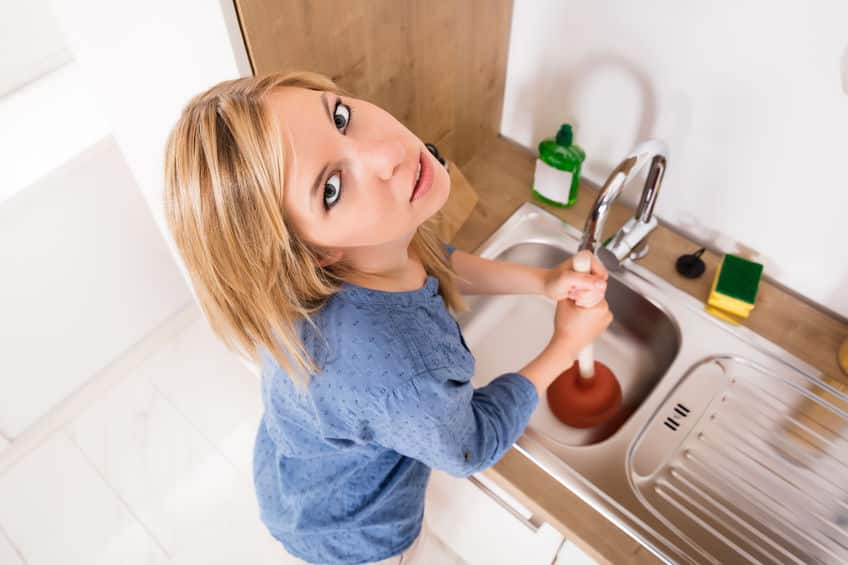Swift Fixes for a Dripping Garbage Disposal
Swift Fixes for a Dripping Garbage Disposal
Blog Article
The content listed below in relation to Why Is My Garbage Disposal Leaking From the Bottom? is seriously informative. Check it out for yourself and see what you think about it.

Waste disposal unit are important cooking area home appliances that aid in disposing of food waste successfully. Nonetheless, a leaking garbage disposal can be an irritating and untidy trouble to take care of. Thankfully, several leaks can be fixed easily with a few straightforward actions. In this write-up, we will discuss exactly how to fix a leaking garbage disposal properly.
Introduction
Garbage disposals are installed under cooking area sinks and are created to shred food waste right into smaller pieces, allowing it to go through the plumbing system quickly. While these gadgets are generally reputable, leakages can occur gradually as a result of deterioration, loosened connections, or damages to the system.
Common Causes of Leaks in Garbage Disposals
Worn Seals and Gaskets
Seals and gaskets play a critical duty in stopping water from leaking out of the waste disposal unit. Over time, these parts can wear away, leading to leaks around the disposal unit.
Loose Links
The connections between the waste disposal unit and the pipes system can end up being loose in time, causing water to leakage out throughout operation.
Cracks or Holes in the Disposal Unit
Physical damages to the waste disposal unit, such as fractures or openings in the real estate, can additionally cause leakages.
Recognizing the Source of the Leakage
Before trying to take care of a leaking garbage disposal, it is important to determine the source of the leakage. This can usually be done through visual inspection or by conducting straightforward examinations.
Visual Evaluation
Inspect the waste disposal unit system very carefully for any indicators of water leakage. Pay close attention to locations around seals, gaskets, and link factors.
Checking for Leakages
One way to check for leakages is by running water via the disposal unit and looking for any kind of noticeable indicators of leak.
Tools and Materials Needed for Repairing a Dripping Waste Disposal Unit
Before beginning the repair service process, collect the necessary devices and products, including a screwdriver, flexible wrench, plumbing technician's putty, replacement seals or gaskets, and epoxy or patching material for fixing cracks or openings.
Step-by-Step Overview to Fixing a Dripping Garbage Disposal
Switch off the Power
Before trying any type of repairs, make certain that the power to the garbage disposal system is switched off to stop the danger of electrical shock.
Locate the Leak
Determine the exact place of the leak and identify the reason.
Tighten Connections
Make use of a wrench to tighten any loose connections in between the disposal unit and the pipes system.
Change Seals or Gaskets
If the leak is because of worn seals or gaskets, get rid of the old elements and change them with new ones.
Patching Splits or Openings
For splits or openings in the disposal device, usage epoxy or a suitable patching product to seal the broken area.
Evaluating the Waste Disposal Unit After Repair Service
When the fixing is total, evaluate the garbage disposal by running water through it to guarantee that the leak has actually been settled.
Preventive Maintenance Tips to Avoid Future Leaks
To avoid future leaks, it is vital to perform regular upkeep on your garbage disposal. This consists of keeping it clean, staying clear of putting non-food products or difficult objects down the disposal, and regularly looking for leakages or various other problems.
Conclusion
To conclude, repairing a leaking waste disposal unit is a relatively simple procedure that can be completed with fundamental tools and products. By following the actions outlined in this article and exercising precautionary upkeep, you can keep your waste disposal unit in good working condition and avoid expensive repair services in the future.
What to Do About a Leaking Garbage Disposal
A leaking garbage disposal often goes unnoticed until you confront a sopping cabinet, a foul-smelling puddle, or an audible drip-drip-drip from the unit. The fix can be frustrating, too, because the leak can stem from a number of components in the system. Fortunately, with a little sleuthing, you can zero in on the leak and—depending on the exact location—stop the icky oozing and repair the component that caused it. Worst case scenario, if it turns out that the garbage disposal must be replaced, installing a new one is a reasonable do-it-yourself task for those with basic plumbing skills. Read on to keep the cash you’d otherwise hand over to a pro.
Prepare to find the leak
Prior to testing the garbage disposal for leaks, unplug it at the wall outlet and turn off the power from the breaker box to prevent electrical shock. Then insert a watertight sink stopper into your sink drain and wipe the unit dry with a clean cloth. In any handy container, mix a few drops of food coloring into a few cups of water, and pour the dyed water onto the sink stopper to help you locate the leak.
Investigate the source
the top, where the disposal meets the sink drain the side, where the dishwasher hose or main drain pipe connects to the disposal or the bottom of the unit Inspect each of these locations while gliding a light-colored rag over the unit; the dyed water will readily show on the rag and reveal the location of the leak. If a leak isn’t immediately apparent, remove the sink stopper and pour a few more cups of dyed water down the sink drain, then check for leaks again. Leaks near the top of the unit are more likely to show themselves while the sink is plugged, while side and bottom leaks are more noticeable while the sink is unplugged.
The metal sink flange that sits directly inside the sink drain is typically sealed around the top with plumber’s putty (a clay-like sealant) and then secured from under the sink with bolts. If the plumber’s putty deteriorates, or the bolts loosen, the flange can no longer form a watertight seal between the sink drain and the disposal—which could cause a leak at the top of the unit.
To reseal the leaky flange, you must first detach the garbage disposal. Start by loosening the screws securing the main drain pipe to the disposal, then loosen the screws in the metal clamp securing the dishwasher hose to the disposal and detach the drain pipe and dishwasher hose from the disposal. Loosen the screws in the mounting ring that connects the disposal to the metal mounting assembly beneath the sink, then pull down the disposal and carefully set it on a clean, dry surface. Loosen the bolts in the mounting assembly with a wrench, then pull down the mounting assembly and set it near the disposal.

We had been guided to that editorial about The Handy Guide To Fixing Your Garbage Disposal Leaking from an associate on another web property. Enjoyed our write-up? Please share it. Let other people find it. I value reading our article about The Handy Guide To Fixing Your Garbage Disposal Leaking.
Contact Us Report this page